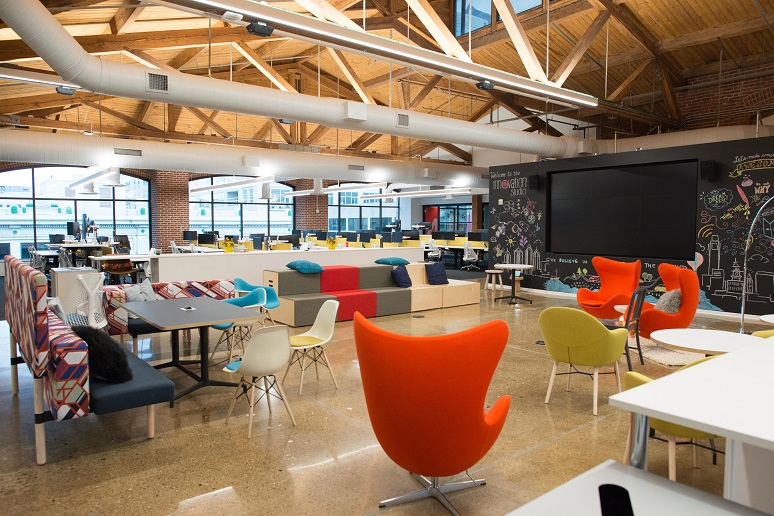Despite obstacles and numerous starts and stops, many workplaces have finally been able to implement their return-to-office plans in 2022, and employees are back in the office in some fashion. Most importantly, those on-site employees are using physical workspaces as a tool for collaboration.
For context on where we are with the return to office, VergeSense, a company that provides a platform to track office space utilization, recently
shared insight from its State of the Workplace Report, which provides space utilization data from over 550 buildings and 100,000 spaces globally. The company found that office space utilization has increased by 87% over the past year. Similarly, VergeSense found that collaborative spaces per floor increased by 45% during this time, with 25% of space per floor now dedicated to collaboration, compared to 10% before the pandemic.
"The data from the State of the Workplace Report 2022 shows that employees' use of space is perpetually shifting and will continue to evolve. With office re-entry plans constantly changing, it's imperative to have tools in place to monitor and measure office use and attendance," Fernanda Belo, head of workplace strategy and insights of VergeSense, said in the study announcement.
As Belo points out, the future of work and how people use spaces will change over time. Over the last year, employees have voiced their strong desire for
workplace flexibility, which encompasses everything from where and how they work to when they put in their hours. A big part of that flexibility will be reflected in the workspaces, and the question for workplace leaders to answer is: How exactly should workplace leaders build out workspaces — and with what tools — to ensure employees have the best in-office experience?
These workspaces need to provide employees with the tools to do everything from a quick brainstorming session with colleagues to project ideation (possibly with the help of
digital whiteboards), and they need to support different types of work like ad-hoc meetings and intense focus work. Additionally, the spaces will need to be able to scale up and down to meet the demand of how many people are in the office.
In order to create these collaborative workspaces, workplace leaders from across HR, IT, and real estate/facility departments will need to band together to ensure that employees are working in a conducive environment. For instance, IT professionals will provide the technical expertise (what speakers, video devices, meeting software, etc. will be best for the space), while real estate/facility professionals will provide insight on how best to arrange spaces to ensure optimal sound quality for meetings.
Technology and physical office changes are only two pieces of the new workspace puzzle; the other piece is in the hands of HR professionals. HR professionals will need to work with IT to ensure employees have the right technology for all their working environments, and they will need to ensure communications around hybrid work are effective and reflect the organization’s workplace culture, as
HR Executive shared in this article. Perhaps even more crucial, HR leaders will need to continuously take a pulse on how employees are feeling about hybrid work and make policy adjustments when appropriate, HR Executive added.
This year, many workplaces will continue to iterate on the hybrid work practices that work best for them. But workplace leaders shouldn’t lose sight of why workplace flexibility is important beyond what employees want. Although this year proved that returning to the office is possible, it’s still anyone’s guess what will happen if we have more COVID surges. Will workplaces manage to keep offices open, or will we see a widespread return to work from home? Time will tell, but by focusing on flexibility, workplace leaders can be ready for whatever comes next.




